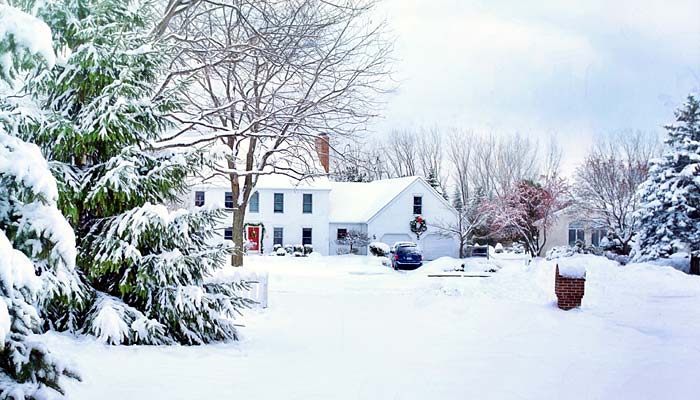It is always tough to relocate, especially if you’re relocating to a different climate than where you live now. Weather has a powerful effect on our lives, so it’s best to be properly prepared. Keep reading to learn about the 10 tips we’ve gathered to make your move a smooth one.

Are you moving to Louisville from South Florida? Or maybe moving to another state from Louisville? While the move can be daunting, whether you’re relocating internationally or just to another city, it also comes with opportunities to learn and explore new terrain.
10 Essential Tips for Relocating to a Different Climate
So, whether this move is required by work or if it’s always been a dream of yours, these ten tips will come in handy to make your relocating experience seamless.
1. Research the Climate Conditions
Are you moving to the hot city of Texas, or does your new home await you in the chilly temperament of Alaska? Wherever you plan to move, requires a thorough understanding of the climate and weather conditions. Being prepared for the hot or cold environment is important for a successful relocation.
Before you start packing, get to know your new home. Learn about the weather all around the year, do research, read local newspapers, and blogs, and if possible, visit the place in person before making your big move.
2. Create a Plan
Just like buying or selling a piece of real estate is a big decision that requires lots of planning, similarly, relocating to a different climate needs a plan too. Relocation is a long process, which means you need a timeline for every move that you’ll be making. Do you want to buy boxes for packing, book movers and packers service, or look for a daycare for your children a few days before your big move? Put it on the to-do list.
Having an outline of all the things you need to do along with the dates and times that you’ll be doing them will save you so much hard work and stress as the day of relocation comes close.
3. Make a Budget
Let’s be realistic, you need a budget to cover your relocation expenses. Just like buying or selling a house comes with expenses of its own, so does relocating to a different climate and location. Without a budget, you will end up spending money on things you don’t even need. So, create a realistic budget and stick to it.
Most of your relocation expenses will include packing and unpacking services, moving insurance, child and pet care, moving your family to the new place, cleaning services, buying new things to settle into the different climate conditions, and temporary housing, if that may be the case. Apart from that, keeping a small amount of money separate from any unprecedented or miscellaneous expenses is also important.
4. Clear Out the Space
Relocating is a great way to make a fresh start. So, don’t carry things you don’t need anymore into your new home. Doing this is essential before you start packing so that you avoid taking things that no longer serve you in your new home.
For instance, a broken or really old piece of furniture or crockery serves no purpose, so don’t put it in any of your packing boxes. Take advantage of waste management to thoroughly declutter your home. This will make the relocation easier for you, both mentally and physically. You can choose to donate things that won’t be used in the new climate, such as clothes, or throw away things that have become too ragged or old for use.
5. Begin Packing
Great start on clearing out the space, now comes the important part, packing all the essentials. A great and organized way of packing is to go room by room and pack your important items accordingly. For instance, you can label a box as kitchen and put all your kitchen-related items in it. This will help you pack your things from your old home, and unpack them in the new home, efficiently.
Also, labeling the boxes with fragile items as fragile is important, especially if you plan to hire a moving company to carry all those boxes to your new dwelling. If possible, use eco-friendly products for your packing needs. Think of it as a part of the decluttering process but for the environment.
6. Make an Emergency Kit
Whether you’re relocating to a new city or a new country, being prepared for any situation is key to a successful relocation process. Keep a small bag with you on the day of moving that consists of a first aid kit, all your important documents such as passports, identification proof, driving license, chargers, snacks for the road, enough water, and something to keep your kids and pets entertained if you have any.
If you know you’ll be moving from a warmer climate like that of Louisiana to a more chilly climate, such as found in Alaska, as you get closer to the new home, it’s important to have some warm clothes in your emergency bag. For instance, the anchorage municipality of Alaska is known for being the coldest in January, requiring extra protection and precaution during the relocation.
7. Hire Efficient Moving Services
Relocating to a different climate means you’re probably moving quite a distance. You can’t possibly expect yourself to carry a house’s worth of items to the new place on your own. As you research long-distance movers you need to make sure they serve your target destination. Most do, but not all.
The most important thing to look for is good online reviews. Spend some time researching good moving and packing services in your area, and book them in advance to ensure that you get them for your desired date, and avoid any booking clashes.
8. Make Arrangements for Child and Pet Care
Relocating and moving from one place to another is already difficult enough. Add little children and pets to the mix, and you get complete chaos. To avoid any accidents during the packing and relocation, find a trustworthy child daycare in your area, who’ll take care of your babies while you get everything in order.
Another thing you may need to pay attention to is finding a good daycare provider for your pets and kids in your new neighborhood. With lots of unpacking and rearranging to do, it’s better to have your little ones away for the day, so that you can settle in and get things that may cause incidents out of the way.
9. Look for Opportunities to Network Locally
The best way to adjust to a new environment, with a different climate and culture is by exploring the place with the locals. Find hobbies and activities that will give you a chance to mingle with the locals, and get to know your neighbors better.
Networking with people around your new home will also help you find the best schools, shops, hospitals, and other necessary amenities nearby, making the relocation process smoother. They can also offer insights into the kind of climate that’s expected in the new place so that you can prepare for what’s next.
10. Make Preparations in Your New Home
Before you relocate, get your place ready for arrival. Make sure that all the amenities and services are available to you as soon as you step inside your new dwelling. This includes basic needs such as water, electricity, gas, and broadband connections.
Also, depending on the climatic conditions of your new home, you will need to install a programmable thermostat, add curtains, look for drafts, and install a door sweep, especially if you’re moving to a place with chilly winters.
Wrapping Up
Relocating is always a big step, especially when you are relocating to a different climate. As such, proper planning and execution is needed. By following the tips given above, whether it’s hiring the right moving service, or arranging for child and pet care in advance, you can give yourself some time to get comfortable with the moving process.
Remember, going that extra mile is the key to enjoying the relocation process, and using it as an opportunity to connect with people from different cultures and backgrounds.



